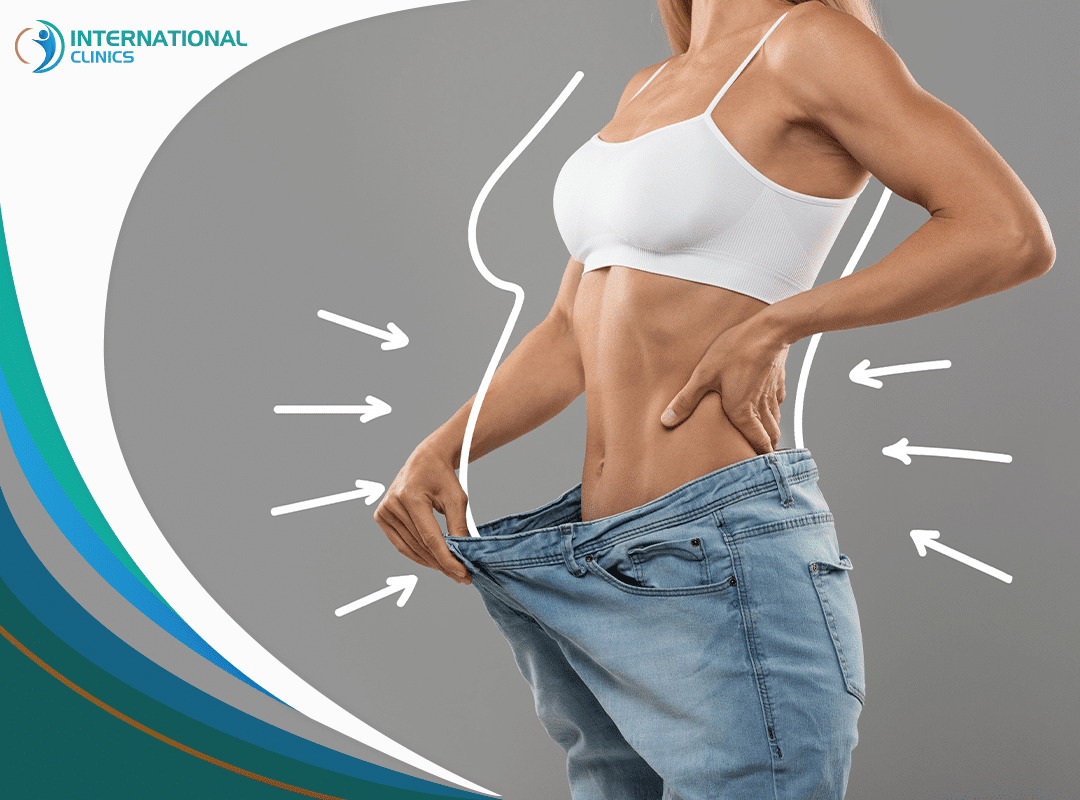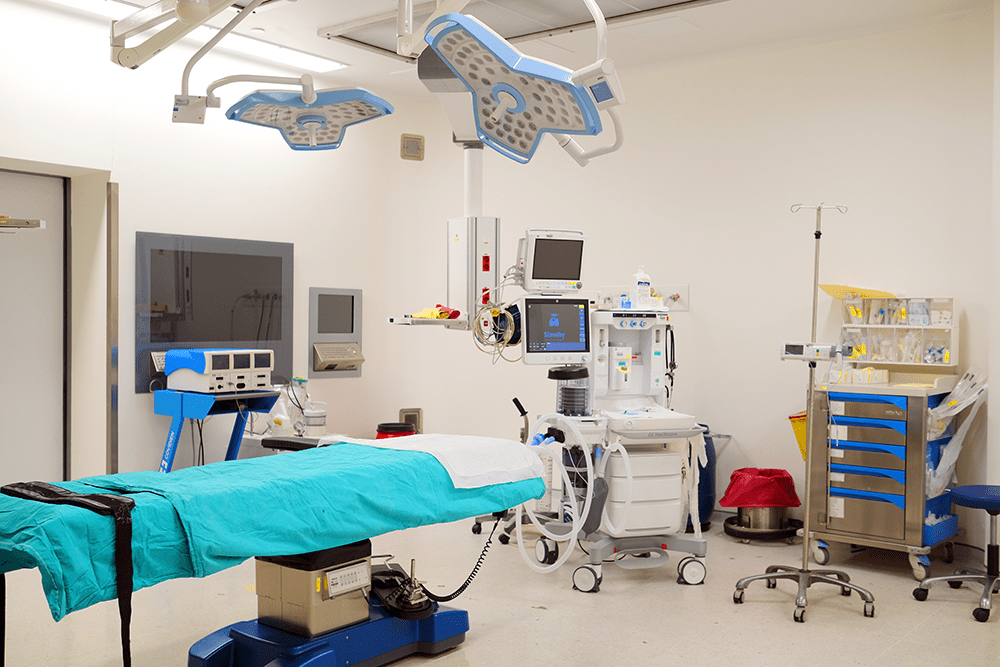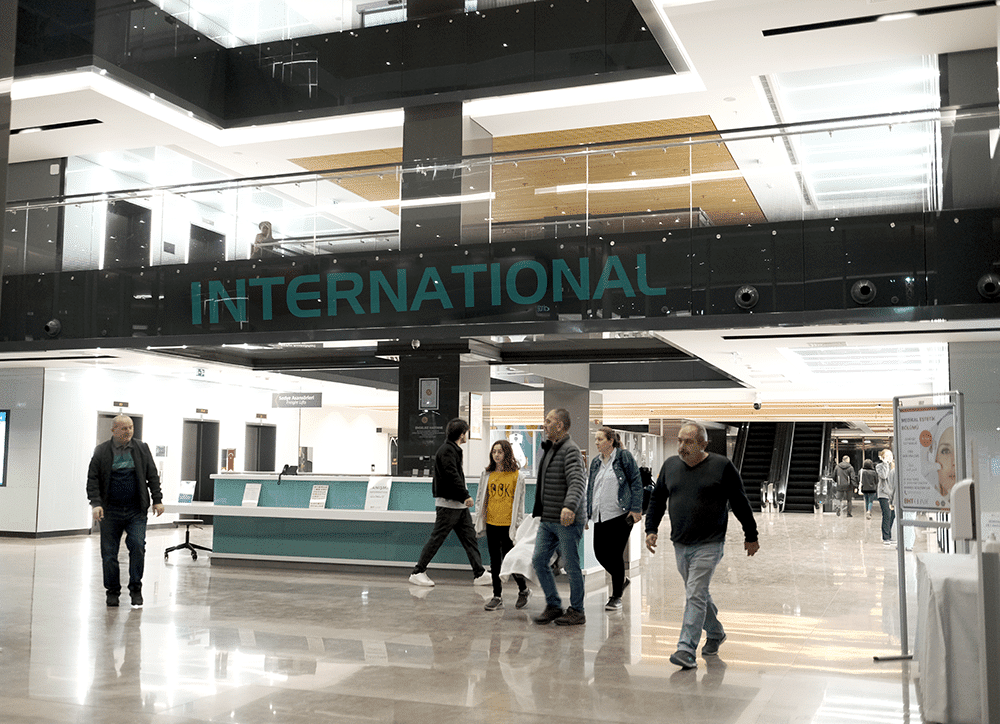






Liposuction has long been a popular cosmetic procedure for those seeking to eliminate stubborn fat deposits and achieve a more sculpted physique. While the desire for a toned body is widespread, concerns about the potential pain associated with liposuction in Turkey often arise.
We will explore various aspects of the procedure, including the use of anesthesia and pain management techniques.
By shedding light on the topic, we aim to provide you with valuable insights and empower you to make an informed decision regarding liposuction. If you're considering this procedure, join us to uncover the truth about its potential discomfort.
Pain is an inevitable part of any surgical procedure, including liposuction. However, the level of pain experienced during liposuction can vary from person to person. Understanding what causes pain in liposuction can help manage expectations.
The procedure typically involves making small incisions in the skin and using suction to remove unwanted fat cells.
This process can cause sensations ranging from mild discomfort to moderate pain for some individuals. Some individuals may have a higher threshold for pain than others, which means they may experience less discomfort during the procedure.
Another factor that influences the level of pain is the technique used by the surgeon. One of the most common methods used for liposuction is the tumescent technique.
This technique involves injecting a large volume of fluid into the targeted area before performing the procedure. The fluid contains a local anesthetic that helps numb the area and reduce discomfort during and after surgery.
While the tumescent technique helps minimize pain, it's important to note that some discomfort may still be experienced during recovery. The injected fluid can cause temporary swelling and soreness in the treated area. However, this discomfort typically subsides within a few days as the body heals.
Another factor that contributes to pain in liposuction is bruising. Bruising is a normal part of healing after liposuction and usually resolves on its own within a couple of weeks.
To help minimize bruising and aid in recovery, plastic surgeons often recommend wearing compression garments after surgery. Although these garments increase the liposuction cost in Turkey, they provide gentle pressure on the treated area, reducing swelling and promoting faster healing.
It's essential to understand that pain tolerance varies among individuals. While one person may describe their experience as mildly uncomfortable, another may find it more painful.
Factors such as overall health, sensitivity to pain, and individual pain thresholds play a role in how each person perceives pain during liposuction.
If you are considering liposuction, it is vital to consult with a reputable plastic surgery center and an experienced plastic surgeon.
They will evaluate your specific case, discuss potential risks and benefits, and provide personalized advice based on your unique circumstances. While pain is a part of liposuction steps, advancements in techniques and anesthesia have significantly improved patient comfort during and after surgery.

The pain experienced during liposuction For most patients falls within the range of mild to moderate pain and can depend on several factors.
Some people have a higher threshold for pain and may experience less discomfort during and after the procedure. On the other hand, individuals with lower pain tolerance might find liposuction to be more uncomfortable.
Another aspect that affects the degree of pain is the extent of the liposuction procedure itself. If only a small area is being treated, such as removing fat from one specific region like the abdomen or thighs, the discomfort may be relatively minimal. However, if multiple areas or larger volumes of fat need to be addressed, there could be a higher level of soreness.
One of the concerns that many individuals have is the level of pain they may experience during and after the procedure. Let's gain a better understanding of what influences pain levels in this popular cosmetic surgery.
During liposuction, a surgeon uses various techniques to remove unwanted fat deposits from specific regions of the body. The more extensive the treatment area or the greater the volume of fat being removed, the longer and more invasive the procedure tends to be, leading to increased postoperative pain.
Invasive techniques like traditional liposuction may cause more discomfort compared to minimally invasive methods like laser-assisted lipolysis.
Traditional liposuction involves manually breaking up fatty tissue using a cannula and suctioning it out. This method requires larger incisions and more aggressive movements, potentially resulting in increased soreness and bruising post-surgery.
On the other hand, minimally invasive methods such as laser-assisted lipolysis utilize laser energy to liquefy fat cells before removal. This approach typically involves smaller incisions, less trauma to surrounding tissues, and reduced bleeding, resulting in a potentially less painful recovery period.
Following liposuction, it is common for patients to experience swelling and bruising in the treated areas. This localized inflammation can lead to temporary discomfort and tenderness. The severity of swelling and bruising varies from person to person but generally subsides over time as the body heals.
One of the most effective ways to manage postoperative discomfort after liposuction is by taking the pain medications prescribed by your surgeon. These medications are specifically chosen to help alleviate pain and promote a smoother recovery process.
To reduce swelling and alleviate pain, By gently placing an ice pack on the affected area for short intervals, you can experience significant relief from postoperative discomfort. The cold temperature helps constrict blood vessels, reducing inflammation and providing temporary numbing effects.
Engaging in light activities, such as walking, plays a vital role in managing postoperative pain and promoting faster healing.
Light exercise improves blood circulation and can contribute to reduced pain levels. Walking not only helps prevent blood clots but also stimulates lymphatic drainage, facilitating the removal of excess fluid from the body.
Strenuous activities should be avoided as they can strain the healing tissues and potentially lead to complications.
Your surgeon will provide specific instructions regarding lifting heavy objects, exercising, and returning to work based on your unique circumstances. Adhering to these restrictions ensures that you give your body ample time to heal without exacerbating any discomfort.
A balanced diet rich in nutrients, vitamins, and minerals provides your body with the necessary fuel to repair tissues and fight off infections. Staying hydrated is equally important as it helps flush out toxins from your system and aids in the healing process.
By incorporating foods that are high in antioxidants, such as fruits and vegetables, you can further boost your body's ability to heal itself. Consuming foods rich in omega-3 fatty acids can help reduce inflammation and promote faster recovery.
One of the common concerns that individuals have is the level of pain they may experience during and after the procedure. Fortunately, advancements in medical science have led to various anesthesia options that can effectively manage pain and discomfort throughout the liposuction process.
For many patients, local anesthesia with sedation proves to be a suitable choice for managing pain during liposuction procedures.
This involves injecting an anesthetic solution directly into the treatment area, which helps minimize immediate pain during surgery. By numbing the nerves in the region, patients can undergo the procedure without experiencing significant discomfort.
Local anesthesia with sedation offers a faster recovery time compared to other options. Since patients are not fully unconscious during the procedure, they experience less post-operative grogginess and can often resume their normal activities sooner. The use of sedatives also helps alleviate anxiety or nervousness that some individuals may feel before undergoing liposuction.
In cases where liposuction treatments involve larger areas or multiple regions of the body, general anesthesia may be recommended. Under general anesthesia, patients are completely unconscious throughout the procedure as a combination of intravenous medications and inhaled gases keep them asleep and pain-free.
General anesthesia carries a higher level of risk compared to local anesthesia, as it affects the entire body rather than just specific areas. The use of general anesthesia also requires additional monitoring and specialized medical personnel to ensure patient safety.
While anesthesia plays a crucial role in minimizing immediate pain during liposuction surgery, it's important to note that it does not eliminate postoperative discomfort altogether.
Once the effects of anesthesia wear off after the procedure, patients may experience varying degrees of soreness, swelling, and bruising in the treated areas. However, this postoperative discomfort can be managed through appropriate pain medication prescribed by your surgeon.
After liposuction, patients can expect some degree of pain, swelling, and bruising in the treated areas. This is a normal part of the healing process as the body adjusts to the changes made during surgery. Most patients can resume light activities within a few days but may require several weeks for a full recovery.
The initial soreness gradually subsides over time as your body heals itself. It is important not to rush into strenuous activities or exercise too soon after liposuction, as this can impede proper healing and potentially lead to complications. During the recovery period, it is essential for patients to follow their surgeon's instructions diligently.
Proper postoperative care plays a significant role in minimizing discomfort and ensuring a smooth healing process. Let's delve into the steps involved in recovery, the techniques used for pain management, and the importance of compression garments.
| Immediate Post-Procedure | You will spend some time in a recovery room where medical professionals will monitor your vital signs. You may experience grogginess from anesthesia or mild pain at this stage. |
| First Few Days | Once discharged, it is essential to have someone accompany you home. During these initial days, swelling and soreness are common, but they gradually subside over time. |
| Recovery Weeks | Over the next few weeks, you'll notice gradual improvements in your condition. It is crucial to follow all postoperative instructions provided by your surgeon diligently. |
| Resuming Normal Activities | Depending on the extent of your procedure, you may be able to resume light activities within a week or two. |
| Medications | Your surgeon will prescribe appropriate medications to manage any discomfort during the healing process. These may include pain relievers or antibiotics to prevent infection. |
| Pain Management Techniques | There are several techniques that can help alleviate post-liposuction discomfort. These may include the use of ice packs, heat therapy, or gentle massages as recommended by your surgeon. |
| Follow-up Appointments | Regular follow-up appointments with your surgeon are essential to monitor your progress and ensure any potential issues are addressed promptly. |
| Reduced Swelling | By compressing the surgical area, these garments aid in reducing postoperative swelling. This can lead to a more comfortable recovery process. |
| Support and Comfort | Compression garments provide support to the treated areas, which can help alleviate pain and discomfort during movement. |
| Improved Healing | The gentle pressure exerted by compression garments promotes blood circulation and lymphatic drainage, aiding in faster healing. |
Liposuction generally involves less pain compared to more extensive surgeries like abdominoplasty or breast augmentation. These procedures require larger incisions and involve manipulation of internal tissues, resulting in more discomfort during the recovery period.
Abdominoplasty (tummy tuck) involves removing excess skin and tightening abdominal muscles in addition to addressing fat deposits.
This procedure requires a longer incision along the lower abdomen and often results in a more extended recovery time due to the increased trauma inflicted on tissues. The post-operative discomfort experienced after abdominoplasty may be more significant than that of liposuction.
Breast augmentation surgery also involves a higher level of invasiveness compared to liposuction. The placement of implants or fat transfer requires incisions either around the areola, under the breast crease, or through an armpit approach.
The stretching and manipulation of breast tissues during the procedure can result in post-operative pain and discomfort that may exceed that of liposuction.
The level of pain experienced after liposuction is typically similar to that of other minimally invasive cosmetic surgeries.
During liposuction, small incisions are made in targeted areas where excess fat is removed using specialized tools. While some discomfort can be expected after the procedure, it is usually can be controlled with prescribed pain medication.
Following the liposuction procedure, it is common for patients to experience mild discomfort or soreness as their bodies heal. This lingering pain may persist for several weeks but tends to gradually decrease over time.
It is important to note that while pain is a common aspect of the recovery process, severe or prolonged pain should not be ignored. If you experience intense or worsening pain, it is essential to contact your surgeon immediately for further evaluation and guidance.

Liposuction can involve varying levels of pain depending on several factors. The pain experienced during and after the procedure can be managed effectively with the use of anesthesia and postoperative pain management techniques.
While some discomfort is to be expected, many patients find that the benefits of liposuction outweigh any temporary pain they may experience.
Many individuals report a significant improvement in their body contour and self-confidence following the procedure.
By choosing a reputable surgeon who prioritizes patient care and employs advanced pain management strategies, you can minimize your discomfort and achieve your desired results.
In conclusion, by shedding light on the pain of liposuction, we aim to alleviate any anxieties or misconceptions you may have. We believe that a well-informed approach to pain management can help you make informed decisions, enhance your overall experience, and achieve optimal results from your liposuction journey.

Liposuction involves some level of discomfort, but this can be effectively managed through anesthesia and postoperative pain management techniques. Many patients find that the benefits of liposuction outweigh any temporary pain they may experience.
The duration of pain after liposuction varies from person to person. Generally, the initial soreness and discomfort subside within a few days to a couple of weeks. Following proper postoperative care guidelines provided by your surgeon will help minimize pain and promote a smoother recovery.
Back liposuction may cause some discomfort during and after the procedure. However, with appropriate anesthesia and postoperative pain management techniques, this discomfort can be effectively managed. Discussing your concerns with your surgeon will help you understand what to expect during your specific case.
Effective techniques for managing pain after liposuction include prescribed pain medications, icing the treated area, wearing compression garments, and following proper postoperative care instructions provided by your surgeon. These measures help alleviate discomfort and promote healing during the recovery period.
Many individuals report significant improvements in their body contour and self-confidence following liposuction despite experiencing some temporary discomfort. By choosing a reputable surgeon who prioritizes patient care and employs advanced pain management strategies, you can minimize your discomfort while achieving your desired results.
The editorial team of International Clinics
Our medical consultants are available around the clock to answer your questions, completely free of charge.